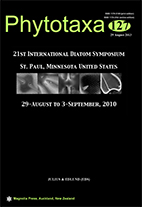Abstract
Microalgae in marine and brackish waters of Europe regularly cause harmful effects, considered from the human perspective, in that they cause economic damage to fisheries and tourism. Cyanobacteria cause similar problems in freshwaters. These episodes encompass a broad range of phenomena collectively referred to as harmful algal blooms (HABs). For adequate management of these phenomena, monitoring of microalgae is required. However, present day monitoring is time consuming and based on morphology as determined by light microscopy, which may be insufficient to give definitive species and toxin attribution. In the European Union (EU) FP7 project MIDTAL (microarrays for the detection of toxic algae), we will first target rapid species identification using rRNA genes. The variable regions of the rRNA genes can be used for probe design to recognize species or even strains. Second, a toxin based microarray will be developed that includes antibody reactions to specific toxins produced by these microalgae because even when cell numbers are low, toxins can be present and can accumulate in the shellfish. Microarrays are the state of the art technology in molecular biology for the processing of bulk samples for detection of target RNA/DNA sequence. Existing rRNA probes and antibodies for toxic algal species/strains and their toxins will be adapted and optimized for microarray use. The purpose of MIDTAL is to support the common fisheries policy and to aid the national monitoring agencies by providing new rapid tools for the identification of toxic algae and their toxins so they can comply with EU directive 91/1491/CEE to monitor for toxic algae, and reduce the need for the mouse bioassay.

